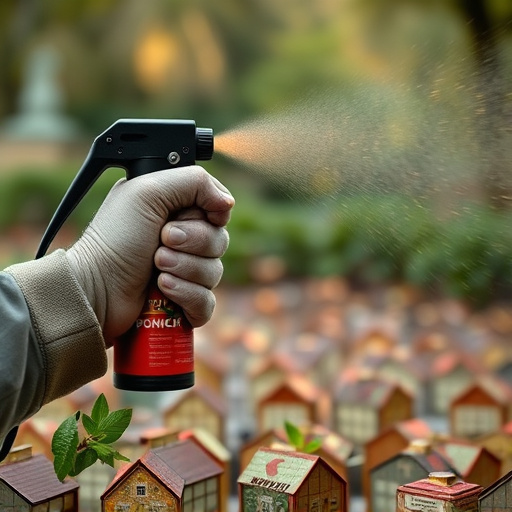Proper pepper spray storage involves keeping it cool (50°F-70°F), dry, and shielded from sunlight (below 25°C) to maximize shelf life of 3-5 years. Store in a secure container out of reach of children and pets, inspect regularly for expiration and damage, replacing if unused for extended periods.
“Uncover the power and practicality of police-grade inflammatory pepper spray compounds. This comprehensive guide delves into the intricate composition and safety measures surrounding these essential tools, offering insights into their effective utilization. We explore optimal storage conditions to ensure longevity, guiding users on deciphering shelf life and knowing when to replace their spray for peak performance. Discover crucial tips for maintaining your pepper spray’s potency and safety.”
- Understanding Pepper Spray Composition and Safety
- Ideal Storage Conditions for Longevity
- Decoding Shelf Life: When to Replace Spray
Understanding Pepper Spray Composition and Safety
Pepper spray, a powerful law enforcement tool, is composed of capsaicin, the active ingredient derived from chili peppers. Understanding its composition is crucial for both safety and effectiveness. The concentration of capsaicin varies among pepper spray variants, determining their potency and range. Beyond composition, proper Pepper Spray Storage and Shelf Life management is essential.
Storing pepper spray in cool, dry places away from direct sunlight ensures optimal efficacy. Following the manufacturer’s guidelines regarding shelf life helps maintain its potency. Proper handling and storage not only guarantee the spray’s quality but also minimize potential risks associated with exposure.
Ideal Storage Conditions for Longevity
To maximize the shelf life and effectiveness of pepper spray, it’s crucial to store it under ideal conditions. The compound should be kept in a cool, dry place, away from direct sunlight and heat sources. Temperatures between 50°F and 70°F (10°C to 21°C) are considered optimal for preserving the potency of the spray. Humidity levels should be maintained between 40% and 60% to prevent degradation.
Proper storage also involves keeping pepper spray out of reach of children and pets, in a secure, locked container. It’s important not to expose the spray to extreme fluctuations in temperature or direct contact with moisture, as these can compromise its integrity. Following these guidelines ensures that the pepper spray compound retains its potency over extended periods, enhancing its effectiveness when needed.
Decoding Shelf Life: When to Replace Spray
Understanding pepper spray’s shelf life is crucial for maintaining its effectiveness. Unlike traditional consumer products, pepper spray has specific storage requirements to preserve its potency. Typically, it should be kept in a cool, dry place away from direct sunlight and heat sources. Many manufacturers recommend storing it at temperatures below 25°C (77°F).
Regularly checking the expiration date and inspecting the spray for any signs of damage or discoloration is essential. Pepper spray usually has a shelf life of around 3 to 5 years, but this can vary depending on the brand and storage conditions. If left unused for extended periods, it might lose its potency, indicating the need for a replacement.
Proper storage and understanding the shelf life of pepper spray are essential components of ensuring its effectiveness and safety. By adhering to optimal storage conditions and staying vigilant regarding expiration dates, individuals can maximize the longevity of their pepper spray compound. Regularly reviewing the pepper spray’s composition and safety guidelines, as well as being attuned to its shelf life, enables users to make informed decisions, ultimately enhancing personal safety and security.
